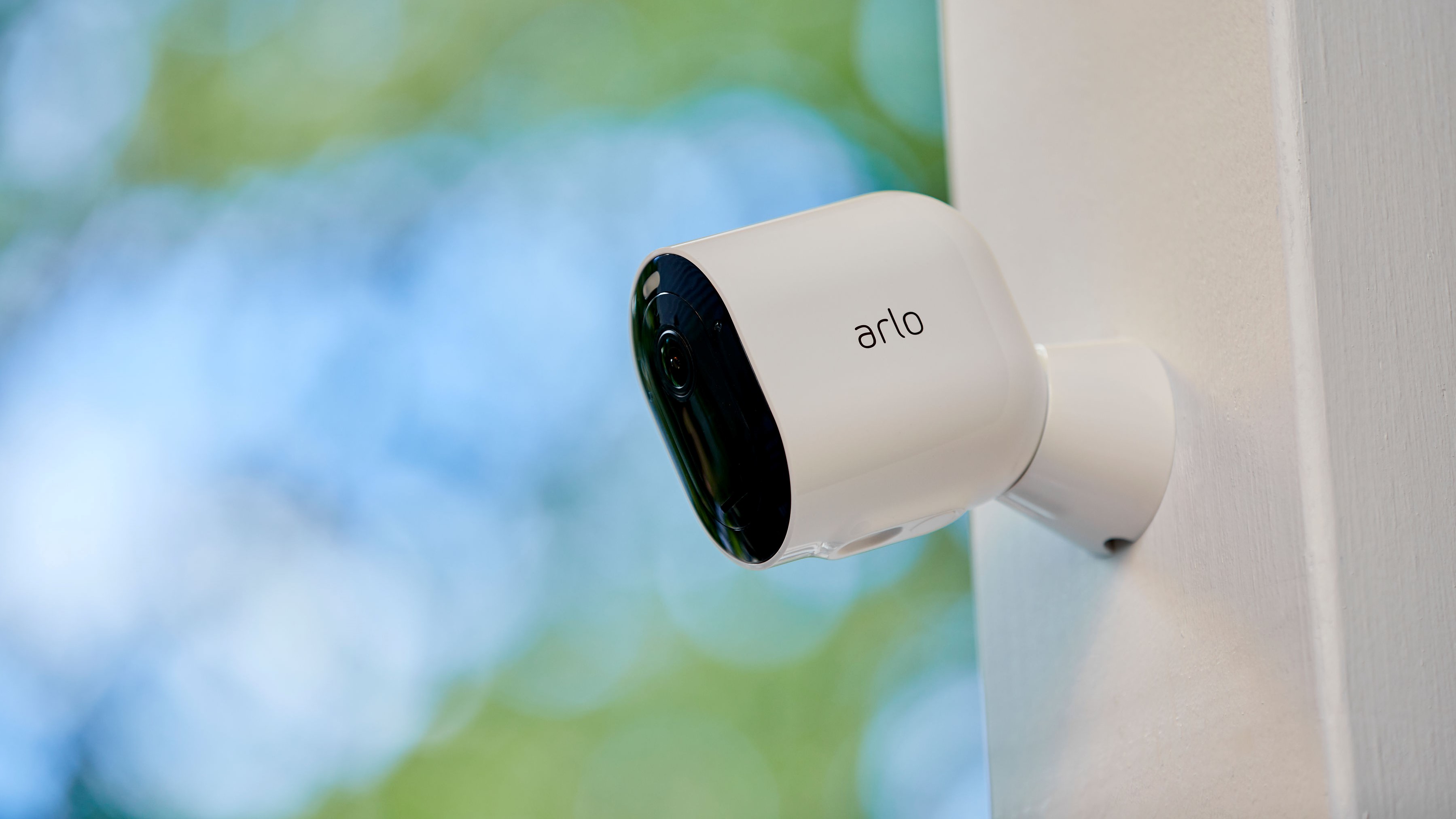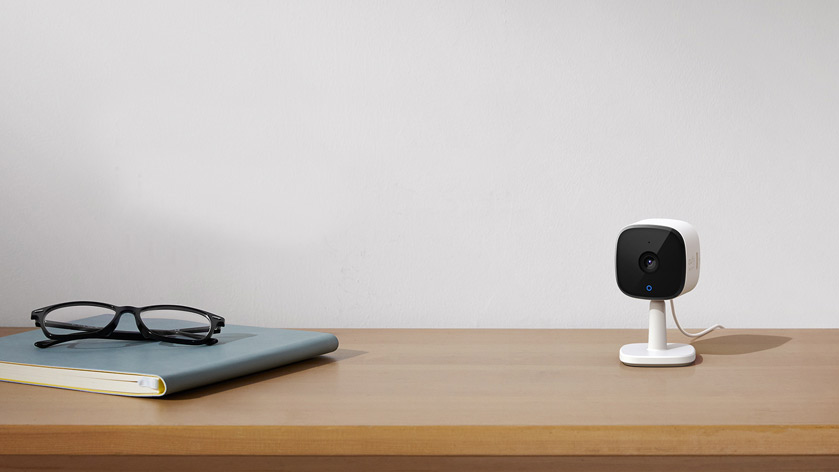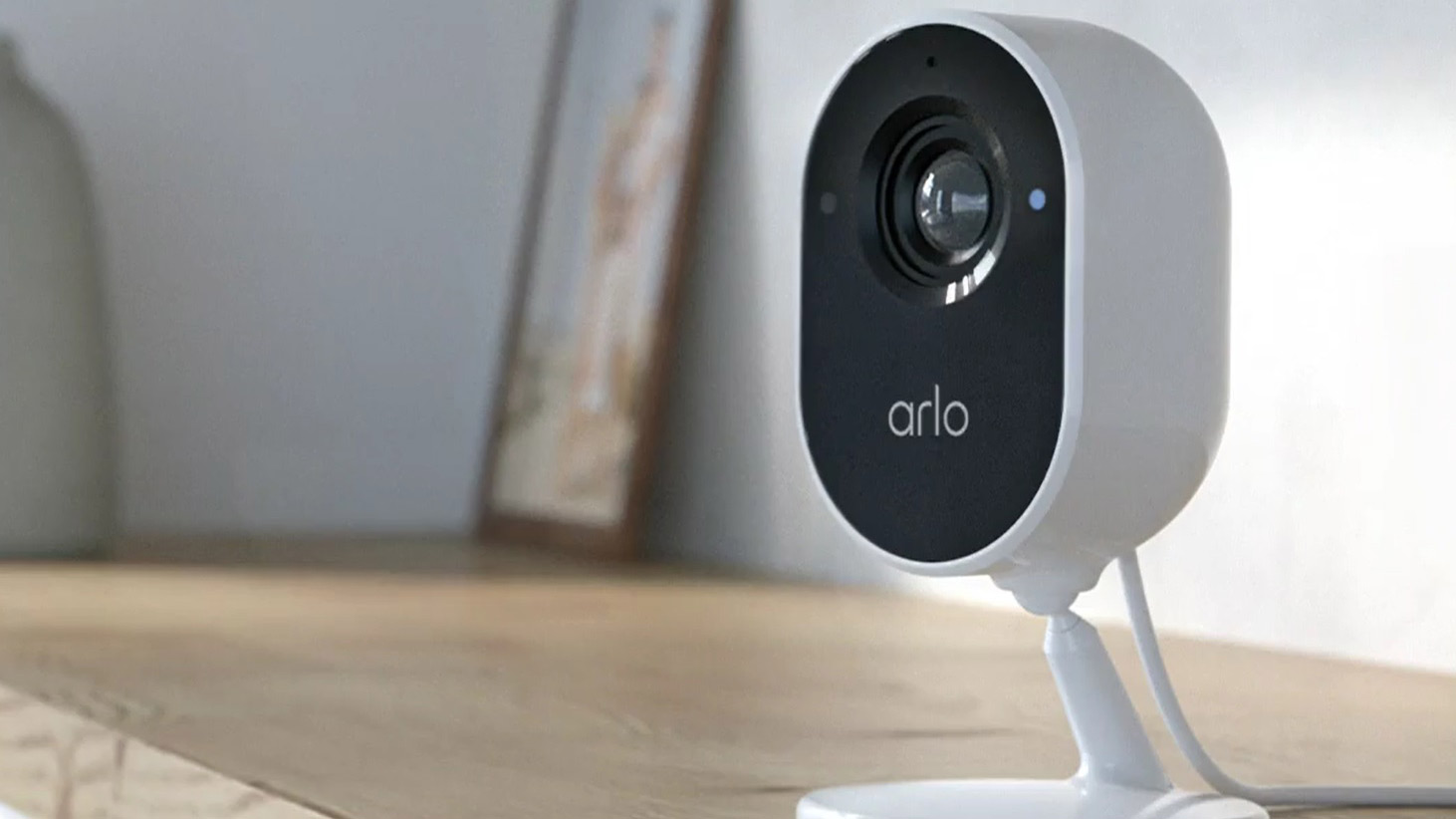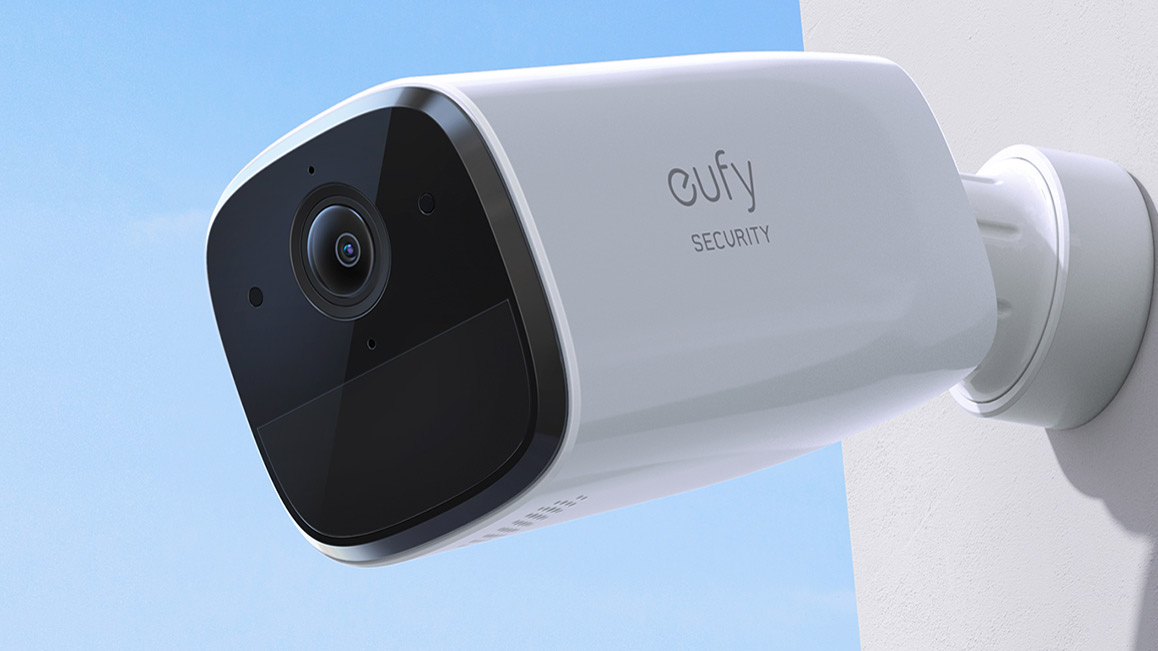Creating a network of security cameras that lets you keep an eye on your home even when you’re not around is easier and more affordable than ever before. Once the only option was traditional CCTV systems, which are expensive, need to be professionally installed and leave you with wires trailing all over your home.
However, now there’s the option of home security cameras too. According to market research firm Statistica, the global smart home security market is forecast to grow by $5 billion to be worth $7.49 billion by 2025. They’re smart, flexible, and can be installed either wirelessly or with a minimum of wiring – and not surprisingly they’re becoming more and more popular.
Arlo and Eufy are two of the biggest names dominating the home security market right now, and it makes sense to opt for a single brand if you’re looking to kit your home out with security cameras and video doorbells.
However, with both of these brands featuring cameras with a glossy white finish and seemingly similar features, you may be left confused about which is best for you, so we’ve tested a range of devices from both brands to give you the low-down.
Best Eufy and Arlo deals
Read on to discover how these two home security camera systems compare – or, if you’ve already decided which of the two you prefer, check out the best prices right now for home security cameras and video doorbells:
Range - Arlo
Arlo has a much larger range of home security cameras and video doorbells than Eufy, and they’re available worldwide, so we’ll start with it – and be prepared, because there’s a very large array of products to choose from.
Most of Arlo’s home security cameras are powered by rechargeable batteries, and they’re weatherproof, so they can be used both indoors and outside, with the exception of the Arlo Essentials Indoor Camera which is a mains-powered security camera designed for use indoors.
The Arlo Ultra and Arlo Ultra 2 are the brand’s top-of-the-range cameras: they record footage in 4K and have a built-in spotlight for color night vision. The Arlo Ultra 2 supports both 2.4GHz and 5GHz Wi-Fi and has a longer range than the Arlo Ultra, which only works on the 2.4GHz band, which should reduce connectivity issues.
Both of these cameras require a base station, which sits inside your home and connects to the internet over a wired Ethernet connection. This creates an individual Wi-Fi connection with each of the Arlo cameras, which is more secure than a direct link between your router and the security camera.
It’s also less likely to be intercepted by unauthorized users, and offers local storage, removing the need to subscribe to Arlo Secure, the brand’s online storage service. However, it’s worth noting that videos stored locally can’t be viewed in the Arlo app – you’ll need to remove the microSD card from the base station and insert it into a computer or other device in order to review the footage.
Next up is the Arlo Pro range of cameras. The Arlo Pro 4 and Arlo Pro 3 offer the same features as the Arlo Ultra, but only record in 2K rather than the 4K. The Arlo Pro 4 doesn’t come with a base station, as it can connect directly to your home network, but it can be used with one if you’d prefer, whereas the Arlo Pro 3 comes bundled with a base station.
There’s also the Arlo Pro 3 Floodlight, a variant of the Arlo Pro 3, which can act as a security light to illuminate the area within its field of view when motion is detected as well as recording footage.
Then there are the Arlo Pro 2, which records footage in color Full HD during the day and black-and-white Full HD video at night, and the Arlo Go – a Full HD battery-powered security camera that connects over mobile data rather than Wi-Fi, making it a good option for areas your home network doesn’t reach.
Arlo’s entry-level cameras are branded as its Essential range, and these don’t require a base station. The Arlo Essential Spotlight and Arlo Essential XL Spotlight record Full HD video in color during the day, and in black-and-white at night. The XL version battery lasts up to one year between charges, compared to the six months offered by the Essential Spotlight.
Arlo also offers two video doorbells that record footage in a resolution of 1536p and in a 1:1 aspect ratio, so you can see the full length of someone on your doorstep. The only difference between the two is in how they’re powered: the Arlo Video Doorbell is wired, while the Arlo Essential Video Doorbell Wire Free uses a rechargeable battery.

Range - Eufy
Eufy has fewer home security cameras in comparison to Arlo. Its premium models are given the EufyCam 2 moniker, and like Arlo’s cameras come with a base station. However the base station includes 16GB of built-in memory on which videos captured by the cameras are stored free of charge, so there’s no need to fork out for a monthly subscription.
Eufy says this is enough storage space for around three month’s worth of video clips. The cameras are battery-powered and weatherproof too, so they can be used inside or outdoors.
There are four designs to choose from. The EufyCam 2 Pro records video in 2K, while the EufyCam 2 captures footage in Full HD. Both cameras offer a 140-degree field of view, and are powered by a battery that Eufy claims will last up to one year between charges. However, these two models aren’t currently available in Australia. Alternatively, the EufyCam 2C and EufyCam 2C Pro, which are available worldwide, offer the same recording resolution as the original EufyCams, but have a slightly narrower field of view at 135 degrees, and a shorter battery life of six months.
Eufy also makes the SoloCam range of standalone battery-powered security cameras, which have memory built into the camera itself, so there’s no need for a base station. Just like the EufyCam 2 range, these are weatherproof, so can be used outside or indoors. There are two models in this range: the SoloCam E40, which records in 2K, and the Full HD SoloCam E20, although this model isn’t available in Australia.
Eufy also offers a range of mains-powered home security cameras. The Solo IndoorCam C22, which is only available in the UK, and the Solo IndoorCam C24 are wired indoor cameras that record in Full HD and 2K respectively. The Solo IndoorCam P22 and P24 build on this with the ability to be remotely tilted and panned. However, unlike most of Arlo’s offering, none of these models have built-in LEDs, so video recorded at night is in black and white rather than color.
The Eufy Floodlight Cam is the brand’s only camera with built-in spotlights. Designed for use outside, this mains-power security camera is an ideal replacement for an existing sensor light on the exterior of your property. The original Eufy Floodlight Cam records in Full HD, while the Eufy Floodlight Cam 2 records in 2K.
Like Arlo, Eufy also offers two video doorbells, and the only difference between these is in how they’re powered: the Video Doorbell 2K (wired) is unsurprisingly mains-powered, while the Video Doorbell 2K (battery) uses a rechargeable battery.

Price
So just how much will these home security devices set you back?
Eufy’s cameras are slightly more affordable than Arlo’s. It's cheapest home security camera that’s available worldwide is the Solo IndoorCam C24, which costs $39.99 / £37.99 / AU$99.95, although in the UK you can pick up the Solo IndoorCam C22 for £35.99 (around $50 / AU$70).
If you want a home security camera without a base station, expect to pay $99.99 / £99.99 / (around AU$135) for the SoloCam E20, while the E40 will set you back $129.99 / £119.99 / AU$229. Eufy’s top-of-the-range home security cameras cost $299.99 / £249.99 (around AU$415) for the EufyCam 2, while the EufyCam 2 Pro is priced at $349.99 / £349.99 (around AU$480).
The Eufy Video Doorbell 2K (battery) costs $199.99 / £179 / AU$349.95, while the mains-powered version is slightly cheaper at $159.99 / £169.99/ AU$349.95.
Arlo’s most affordable camera is the Arlo Essential Indoor Camera, which will cost you $99 / £119.99/ AU$229, while weatherproof cameras that can be used outside start at $99 / £119.99 / AU$229 for the Arlo Essential Spotlight camera.
Its top-of-the-range model, the Arlo Ultra 2, will set you back $599.99 / £629.99 / AU$799.
Meanwhile, the wired doorbell is priced at $149.99 / £179.99/ AU$289.99, and the battery-operated version, which is identical in every respect apart from the way it's powered, is priced at $199.99 / £179.99 / AU$329.

Subscription cost
To get the most out of Arlo’s security camera systems you’ll need to subscribe to the brand’s monthly plan, which allows you to review footage recorded by the cameras and doorbells at a later date, as well as offering access to smart features that help reduce the number of unwanted notifications. If you choose not to subscribe, you’ll still get alerts about motion detected by the cameras, and you’ll be able to log in and view the live feed, but you won’t be able to store videos or review them after they’ve been recorded.
The basic Arlo Secure plan costs $2.99 / £2.79 / AU$4.49 per month for one camera if you want to store footage in up to 2K resolution for no longer than 30 days. Alternatively, Arlo Secure Unlimited, which is priced at $9.99 / £8.99 / AU$14.99 per month, lets you store 2K footage from an unlimited number of cameras for up to 30 days.
There’s also Arlo Secure Plus, which lets you store footage recorded in 4K for up to 30 days. This costs $14.99 / £12.49 / AU$ 21.99 per month, and there’s no limit on the number of cameras you can use it with.
With all three plans, the camera can identify whether motion detected has been caused by a person, animal or vehicle. A three-month free trial is included with most new cameras.
If you purchase some of Arlo’s older home security cameras, such as the original Arlo, Arlo Pro or Arlo Pro 2, these include seven days of cloud recording free of charge, although you will need the Arlo Secure service if you want to review the video for up to 30 days after it’s been recorded, or want the source of the motion to be identified.
As we’ve mentioned, Eufy’s cameras come with local storage for video clips, so there’s no need to subscribe to a monthly plan, making them excellent value for money.

Video and audio
Eufy and Arlo‘s security cameras are generally evenly matched when it comes to video and audio quality.
We’ve reviewed the majority of the products offered by both brands, and in our tests, the video has always been clear and detailed, while the audio has been clear. There are a couple of reasons Arlo’s video and audio capture slightly trumps Eufy in our eyes.
The first is that some of its cameras can record in 4K resolution, something Eufy doesn’t offer. These are ideal if you want to mount the camera at a high level to ensure it captures a wider area without losing details in the video.
The second is the inclusion of spotlights in several of the cameras, in order to provide color footage at night as well as during the day; Eufy only offers this on its Floodlight Cam, which is mains-powered, and the design is pretty bulky, whereas Arlo retains the compact size while still including the light.
App and smart integrations
Both Arlo and Eufy have apps that are simple to navigate and enable you to view the feed from a camera or doorbell in real-time, while also review footage previously captured – providing you’ve subscribed to Arlo Secure in the case of that brand.
Both platforms also send rich notifications, with a snapshot of an activity detected, to your smartphone too, so you can quickly see if an alert is something you need to worry about or not.
The two brands also offer integration with voice assistants, so, in addition to using your phone, you can use the best smart speakers to converse with anyone in the camera’s field of view, and view a live feed from the camera on the best smart displays.
Arlo is the clear favorite here, as all of its home security cameras and video doorbells integrate with Amazon Alexa and Google Assistant, while most of its devices also offer Apple HomeKit integration.
Eufy’s cameras are also compatible with Alexa and Google Assistant, but there are far less than work with HomeKit, and some of those that do capture footage at a reduced resolution when used with Apple’s smart home system.
Verdict
Both Eufy’s and Arlo’s home security camera systems have proved to be effective and easy to use during our testing. Eufy is the more affordable of the two, not least because all of its cameras offer local storage at no extra cost, so you don’t have to subscribe to a service plan to get the most out of them.
Meanwhile, some of Arlo’s cameras offer higher resolution video, while video recorded at night is in color thanks to built-in LEDs. However, you’ll need to subscribe to one of Arlo’s cloud-based storage plans if you want to review videos in the app, which means there’s an ongoing cost.
If you already use Apple HomeKit, Arlo is a better fit account of offering a wider array of models that support Apple’s smart home framework, while those on a budget, or looking to avoid ongoing costs would be better off considering Eufy’s range.
- Check out these great home security cameras deals
from TechRadar - All the latest technology news https://ift.tt/3sUD6x8
No comments:
Post a Comment